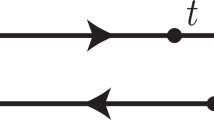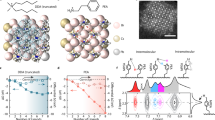Abstract
A quantitative method is described for finding the optimum percentage of periodicals for a library in a given field. The appearance of new journals is apparently counterbalanced by the disappearance of the old.
This is a preview of subscription content, access via your institution
Access options
Subscribe to this journal
Receive 51 print issues and online access
$199.00 per year
only $3.90 per issue
Buy this article
- Purchase on SpringerLink
- Instant access to full article PDF
Prices may be subject to local taxes which are calculated during checkout
Similar content being viewed by others
References
Bradford, S. C., Documentation (London, 1948).
Brookes, B. C., Nature, 224, 935 (1969).
Brookes, B. C., J. Doc., 26, 22 (1970).
Oliver, M. R., J. Doc., 27, 11 (1971).
Author information
Authors and Affiliations
Rights and permissions
About this article
Cite this article
BROOKES, B. Optimum P% Library of Scientific Periodicals. Nature 232, 458–461 (1971). https://doi.org/10.1038/232458a0
Received:
Published:
Issue date:
DOI: https://doi.org/10.1038/232458a0
This article is cited by
-
Bradford's law in relation to the evolution of a field. A case study of solar power research
Scientometrics (1993)
-
Rising tail in Bradford distribution: Its interpretation and application
Scientometrics (1988)
-
Frequency distributions of scientific performance a bibliography of Lotka's law and related phenomena
Scientometrics (1978)
-
Library Optimum
Nature (1971)



